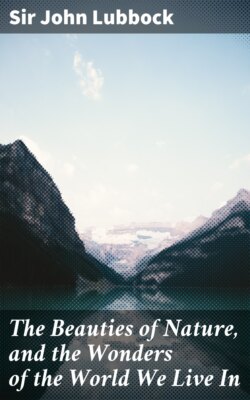Читать книгу The Beauties of Nature, and the Wonders of the World We Live In - Sir John Lubbock - Страница 12
На сайте Литреса книга снята с продажи.
MODIFICATIONS
ОглавлениеThere is in New Zealand a form of Crow (Hura), in which the female has undergone a very curious modification. It is the only case I know, in which the bill is differently shaped in the two sexes. The bird has taken on the habits of a Woodpecker, and the stout crow-like bill of the cock-bird is admirably adapted to tap trees, and if they sound hollow, to dig down to the burrow of the Insect; but it lacks the horny-pointed tip of the tongue, which in the true Woodpecker is provided with recurved hairs, thus enabling that bird to pierce the grub and draw it out. In the Hura, however, the bill of the hen-bird has become much elongated and slightly curved, and when the cock has dug down to the burrow, the hen inserts her long bill and draws out the grub, which they then divide between them: a very pretty illustration of the wife as helpmate to the husband.
It was indeed until lately the general opinion that animals and plants came into existence just as we now see them. We took pleasure in their beauty; their adaptation to their habits and mode of life in many cases could not be overlooked or misunderstood. Nevertheless the book of Nature was like some missal richly illuminated, but written in an unknown tongue. The graceful forms of the letters, the beauty of the colouring, excited our wonder and admiration; but of the true meaning little was known to us; indeed we scarcely realised that there was any meaning to decipher. Now glimpses of the truth are gradually revealing themselves, we perceive that there is a reason, and in many cases we know what the reason is, for every difference in form, in size, and in colour; for every bone and every feather, almost for every hair.[12]
